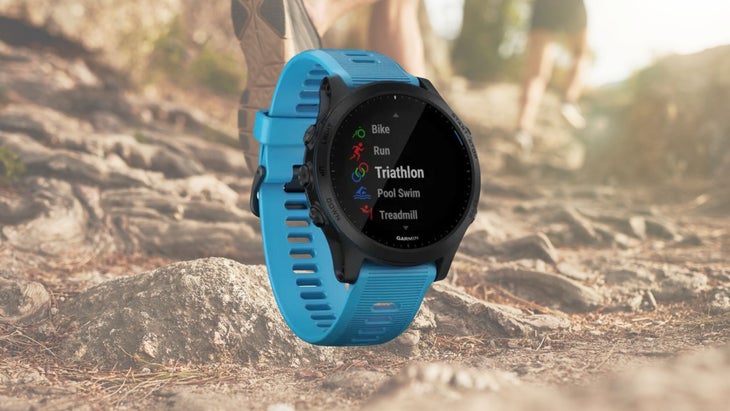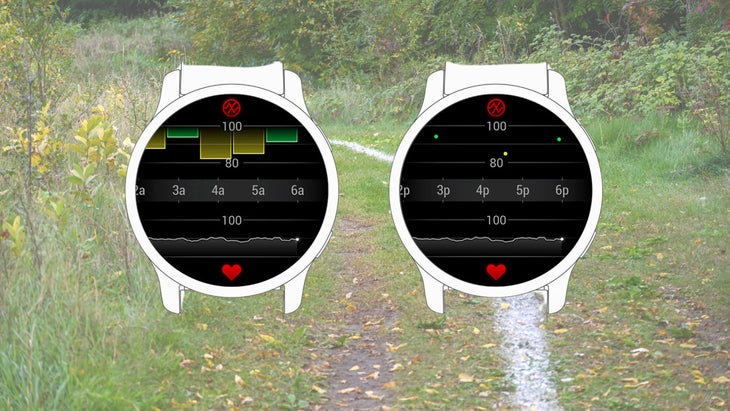New perk: Easily find new routes and hidden gems, upcoming running events, and more near you. Your weekly Local Running Newsletter has everything you need to lace up! Subscribe today.
Go for a run on a brutally hot, humid day, or log some miles at a higher elevation than you’re used to, and it feels like you’ve suddenly lost weeks of fitness progress. Heat and altitude put your body under a serious amount of stress, which translates directly to your performance. Knowing what to expect—and how to adapt—can help you deal with the new stressors and keep training smart.
Not Enough O2
Physiologically, both scenarios cause similar adaptations, and both involve oxygen. In the heat, your body is actually diverting oxygen from your working muscles to help cool you down; at altitude, you’re straight-up just operating with less oxygen in the air.
“When you’re exposed to heat stress, your body upregulates these things called heat shock proteins,” explains Lance Dalleck, PhD, an exercise physiologist and researcher with the High Altitude Exercise Physiology Program at Western Colorado University. “Those heat shock proteins help you produce more blood plasma volume and preserve another protein called hypoxia-inducible factor 1-alpha, or HIF-1-alpha. And HIF-1-alpha is something that your body upregulates when you’re exposed to hypoxia, or deprived of oxygen at altitude.”
The increase in blood plasma volume caused by heat adaptations makes it easier for your body to keep exercising while dumping heat more efficiently, explains Dalleck. And in a hypoxic situation, your body produces more red blood cells and increases the capillary density in your working muscles, making it easier to deliver oxygen to those muscles.
RELATED: How Hot is Too Hot to Run with My Dog?
Adaptation Timeframes and Strategies
What’s different, though, it’s how long it takes your body to adjust to heat versus altitude. “You can acclimate to heat in about 10 days,” says Dalleck. “At altitude, we’re talking about three or four weeks.”
Of course, everyone adapts on a different timeline. But anyone who’s new to either of these scenarios needs to adjust their training to account for the extra stress. “Research consistently demonstrates that upon acute exposure to altitude there is a 10 to 20 percent reduction in VO2max,” says Dalleck.
Your VO2 max is how efficiently your body uses oxygen—so it makes sense that it would decline in a scenario with less oxygen. “It can feel like you’ve suddenly been detrained or aged five to 10 years!” he says. To compensate for that, Dalleck recommends slowing your pace by 45 seconds to a minute per mile, or cutting a run short by a mile or two.
You don’t just need to slow down while adapting, you need to spend more time recovering—within workouts and between them. “If you’re doing one-mile repeats and you would typically take four minutes rest in between, add another minute or two,” says Dalleck. Your body needs that extra time to recover when there’s less oxygen (especially at altitude).
You’ll also need to add an extra day of recovery to what you would normally take in between hard workouts. “You may need to rewire your thinking so you’re not doing a traditional seven-day training week, but one with eight or nine days to account for that extra recovery,” Dalleck explains.
Eventually, you’ll recoup any reduction in pace as you acclimate to your environment. But it’s important to leave that extra recovery time as long as you’re training at altitude. “Your body is still in a hypoxic environment, so you always need to account for that,” says Dalleck.
And because altitude can affect your sleep quality (due to an increase in resting heart rate) and cause gastrointestinal distress, managing your sleep, stress, hydration, and nutrition are super important. “You just have less margin for error,” says Dalleck, “so you have to be really mindful that those other stressors can contribute to overtraining or overreaching.”
Tracking Insights for Better Training

One of the ways you can stay on top of how heat or altitude affects you is through your activity tracker. The Garmin Forerunner 945 has two features that can better inform your training when you’re under heat or altitude stress: VO2 max and the Pulse Ox Sensor.
Your VO2 max is a big indicator of your cardiovascular fitness, and it can be affected by heat and altitude. When you’re running on a hot, humid day, hot, humid day, your heart rate spikes as your body works to shunt extra blood flow to the skin to cool you off; that makes a workout that may be easy on a cool day feel a lot harder cardiovascularly.
RELATED: How to Get Better Sleep with Your Smart Watch
The Garmin can sense this too, and calculate how much it is affecting your performance. “Using weather data like temperature and humidity, wind speed, the Garmin can actually detect when you’ve had enough exposure to the heat during your training that it’s making a difference on your physiological adaptations,” explains Joe Heikes, the lead product manager for Garmin’s fitness watches. A little sun will pop up on the VO2 max screen, and within the widget you’ll find a percentage that tells you how heat-acclimated you are at a given point.
At altitude, you may notice a nosedive in your VO2 max. Under your Training Status on the Forerunner, you can see whether your ability to perform at your current altitude is increasing, maintaining, or decreasing—guidance that can come in handy when preparing to race at a certain elevation. That dip in VO2 max is also totally normal, and it takes about 21 days for you to get back to where you were before, says Heikes.

The Pulse Ox sensor, on the other hand, measures the oxygen level in your blood, which also makes a good tool for measuring altitude acclimation. As altitude increases, the level of oxygen in your blood can decrease; as you acclimate, the percentage will rise. It can also identify altitude-induced disturbances in your sleep, says Heikes—which may explain why your workouts are suffering.
Every runner notices how much harder it is to workout in the heat and altitude; these tools can provide more insights and guidelines as to how these external factors are affecting you internally. And the more you know, the better you can train and the better prepared you’ll be on race day.
